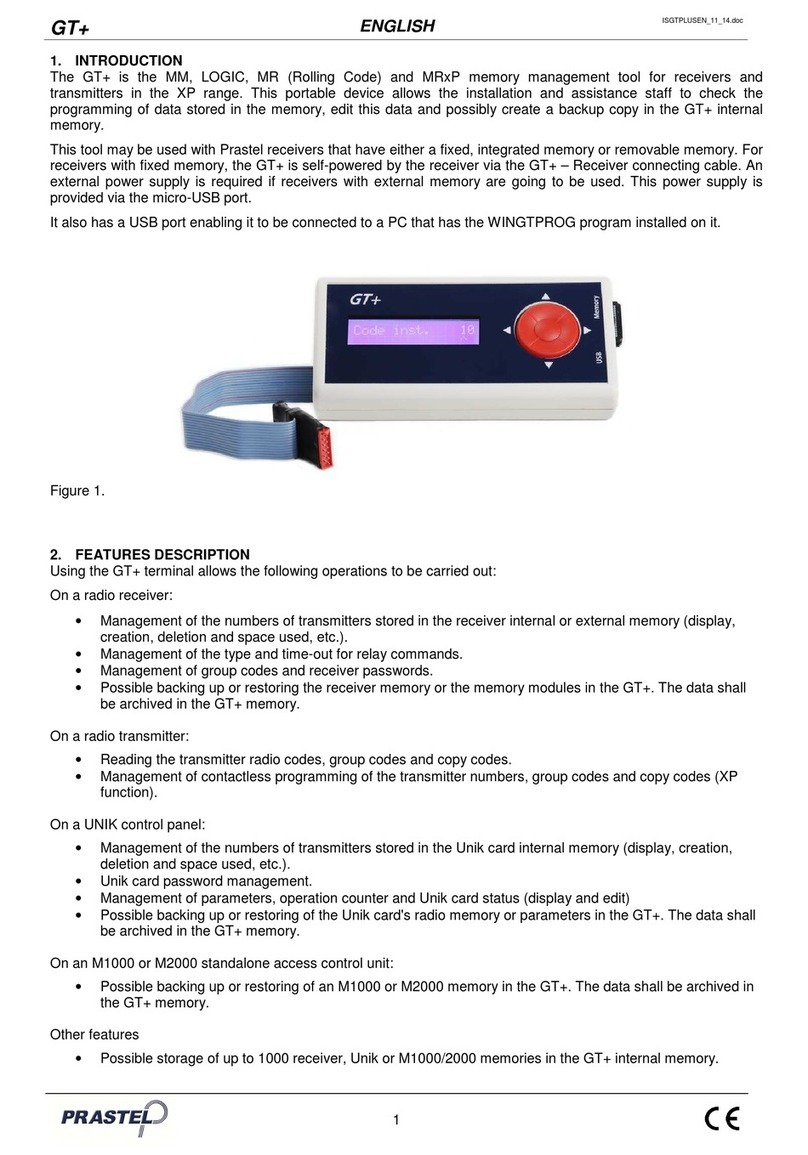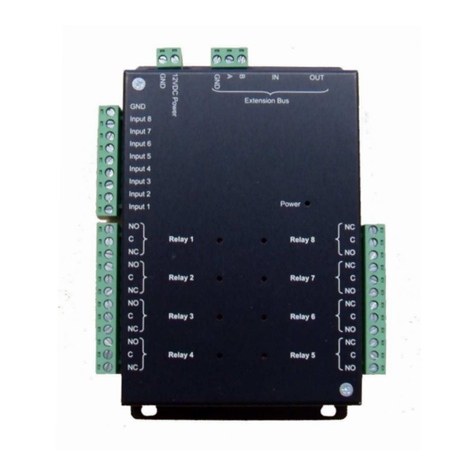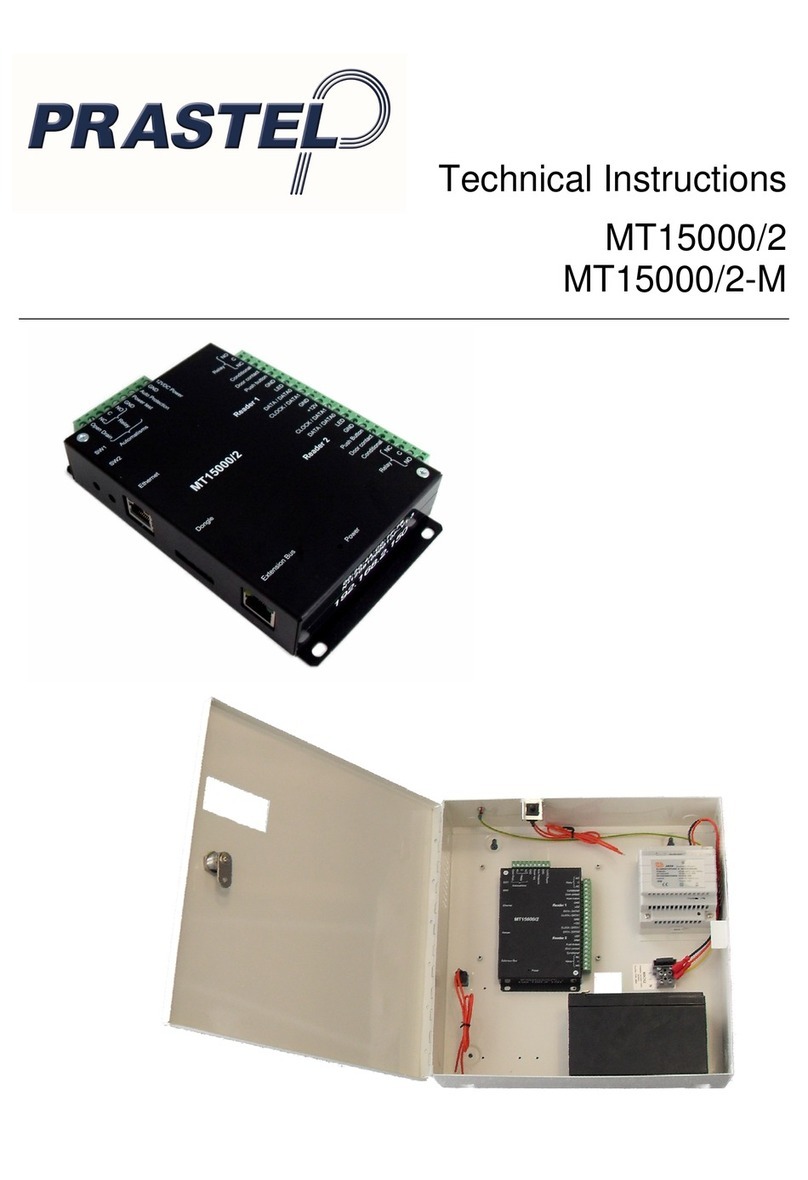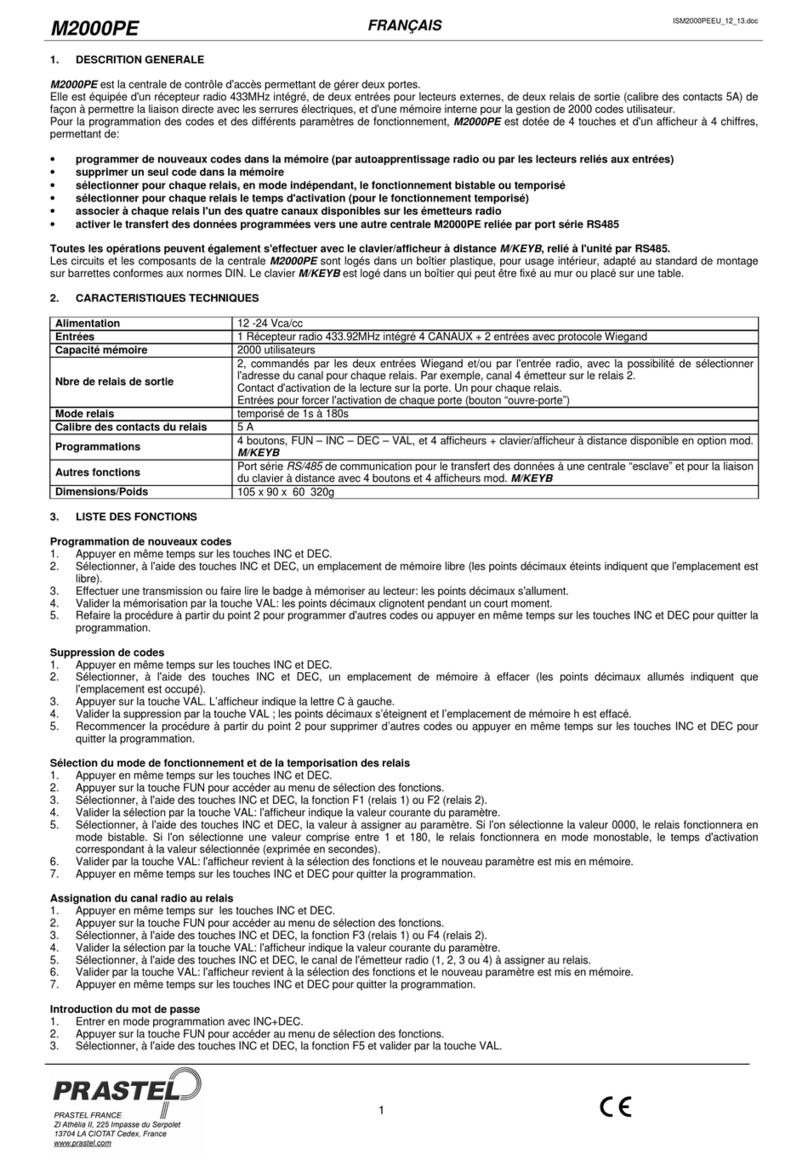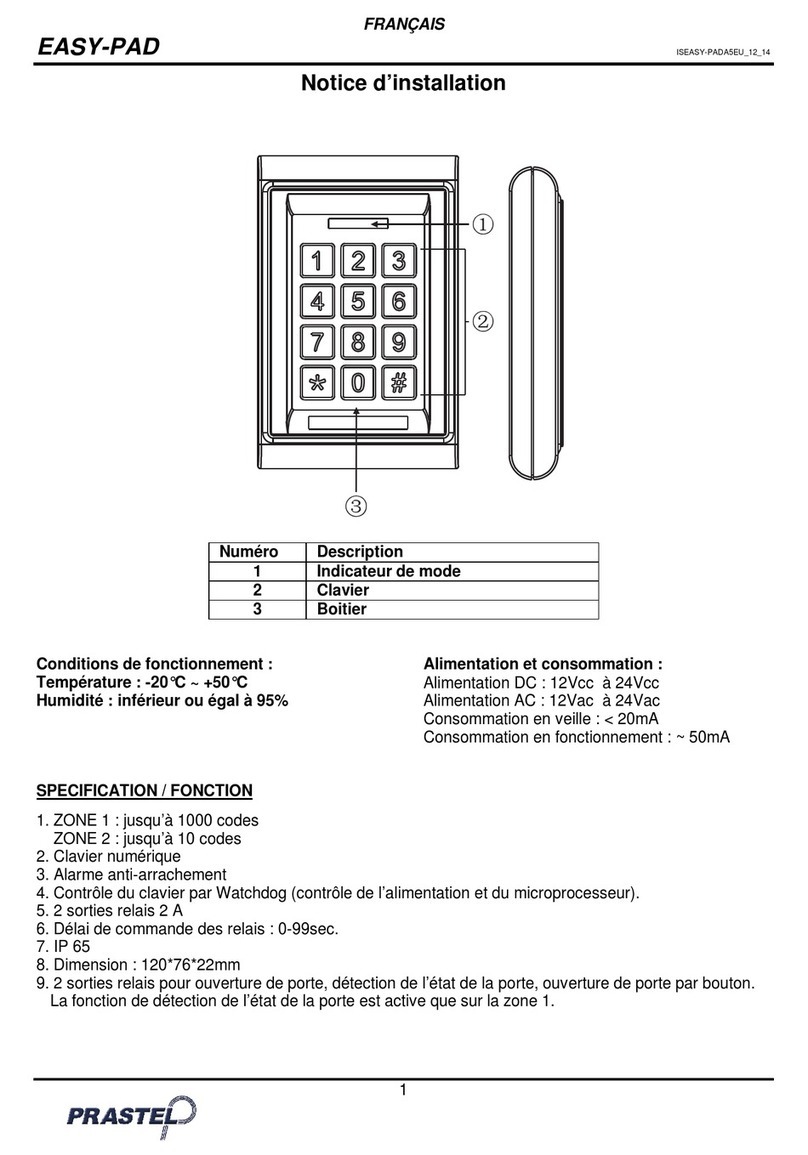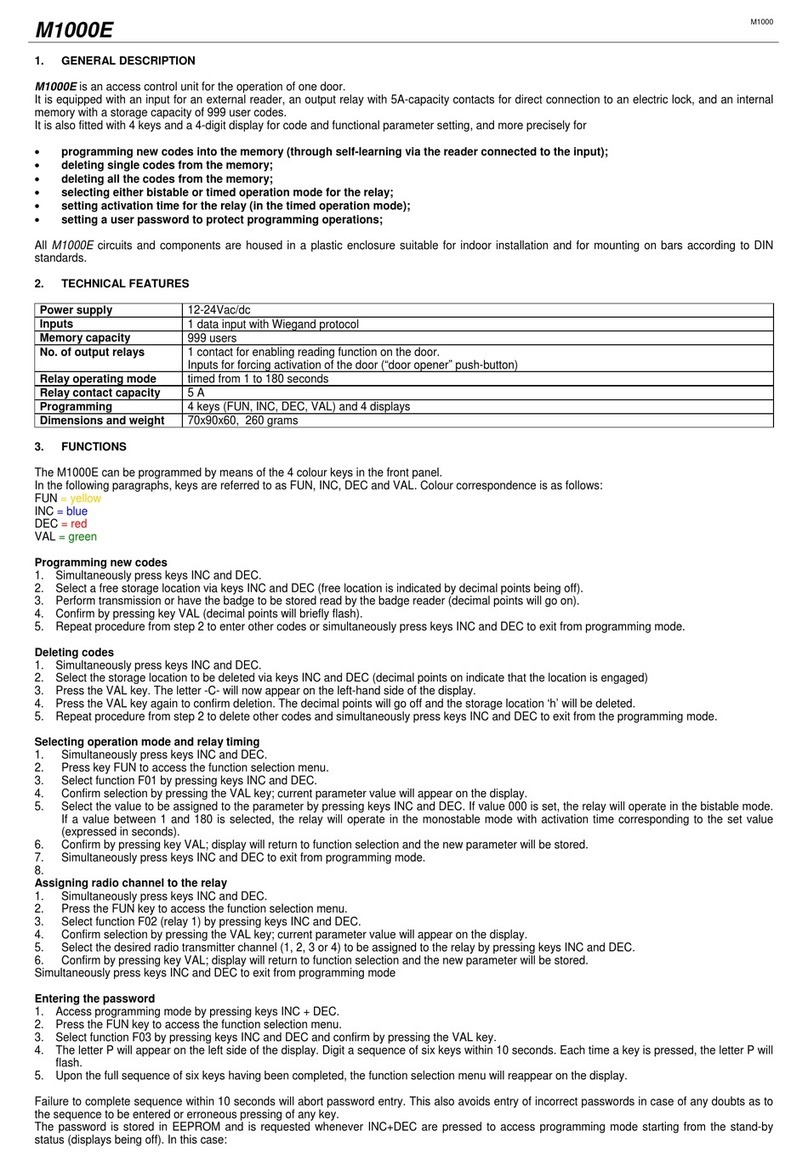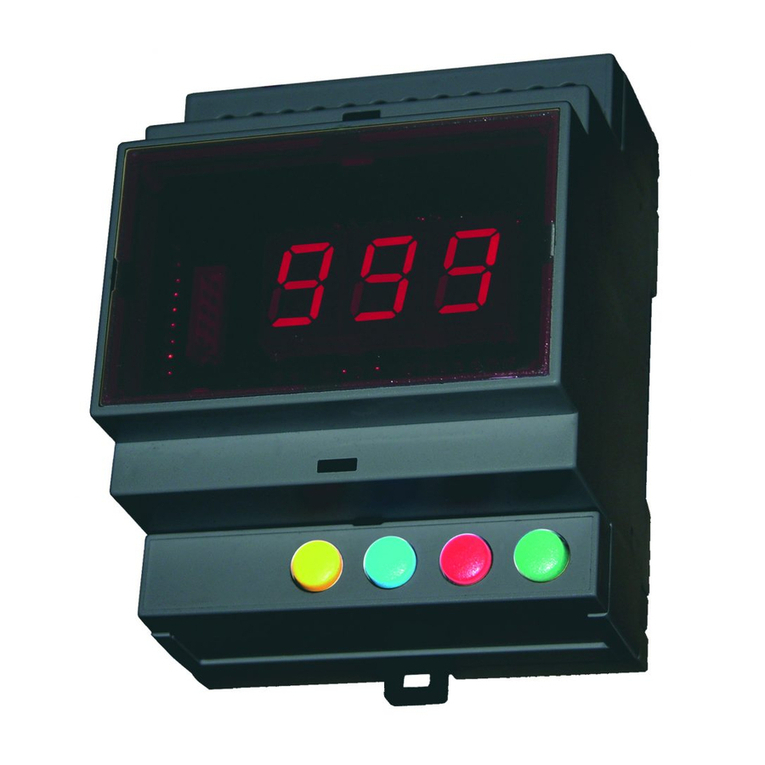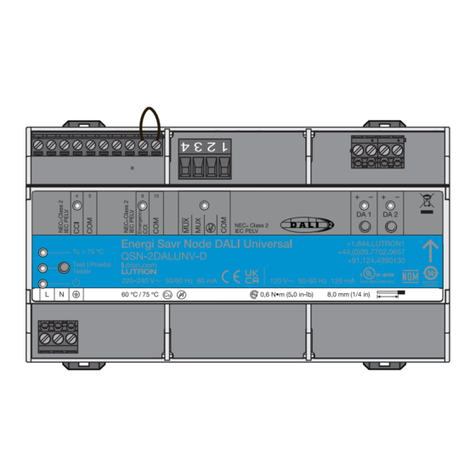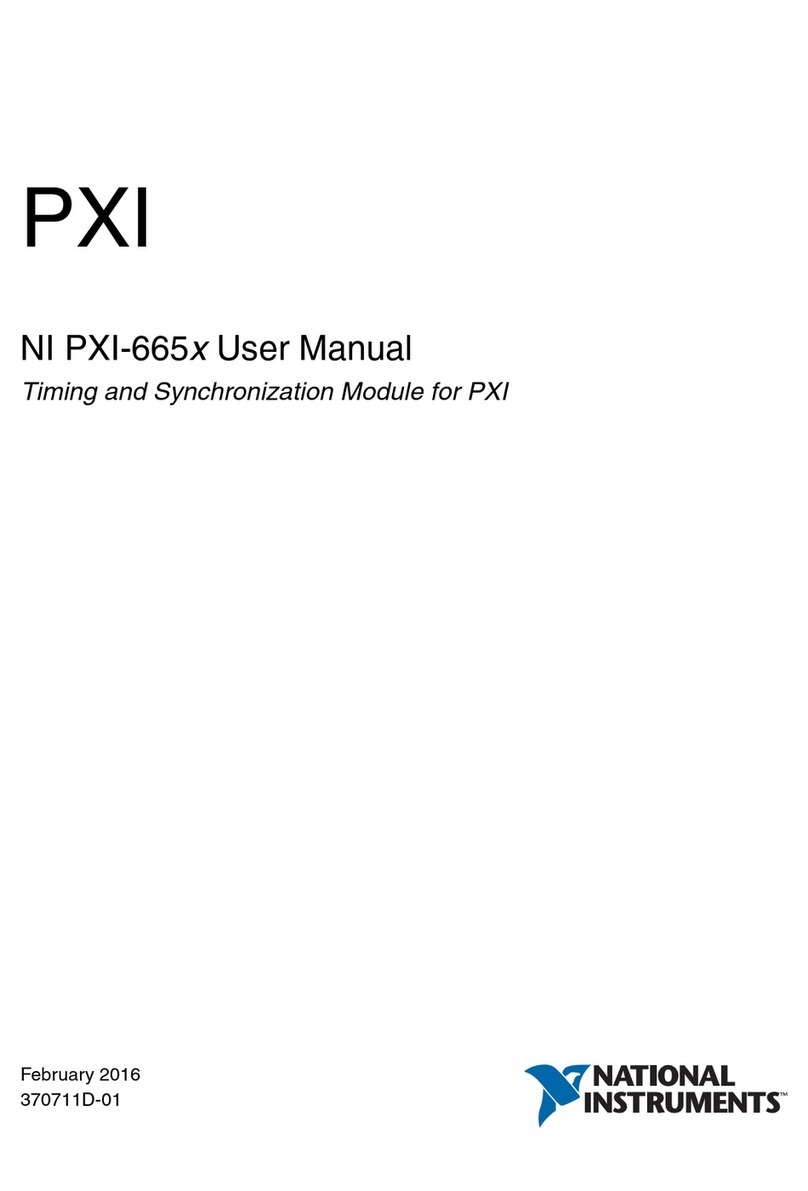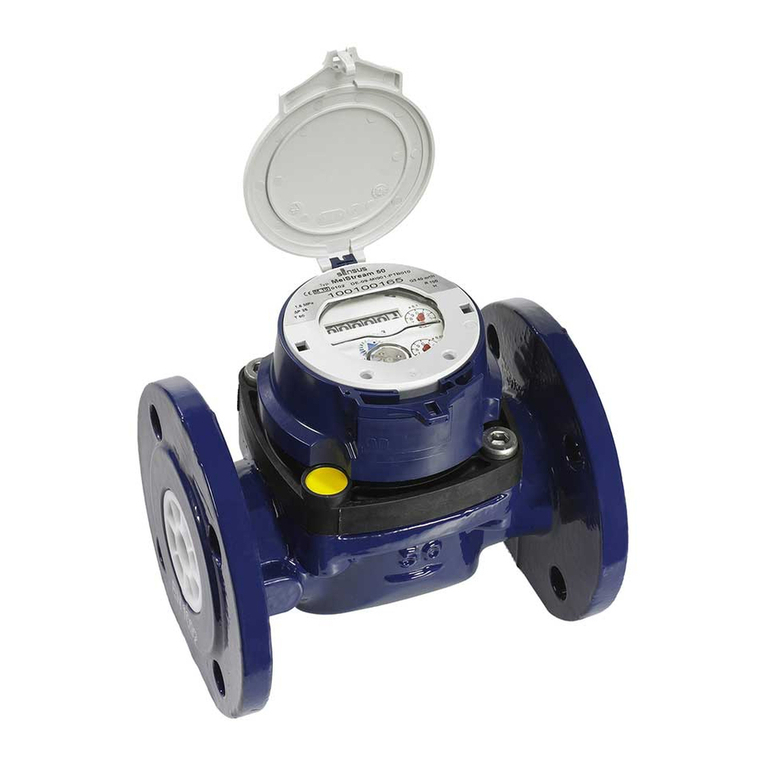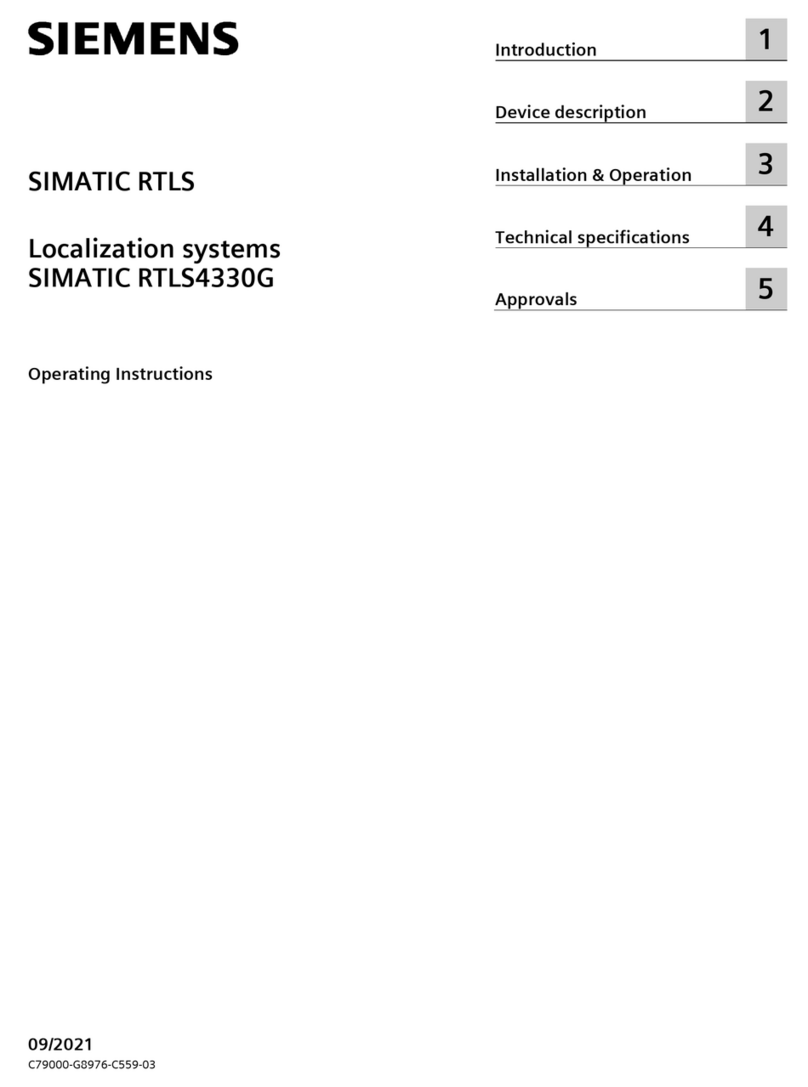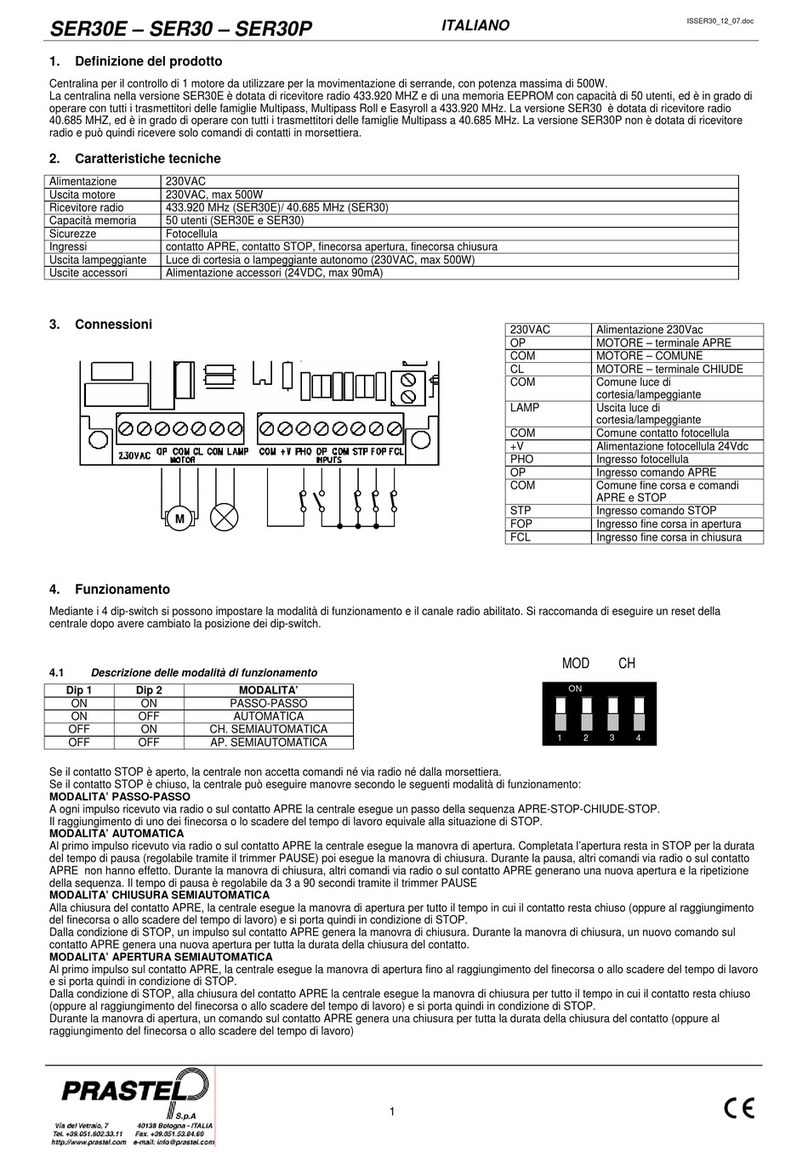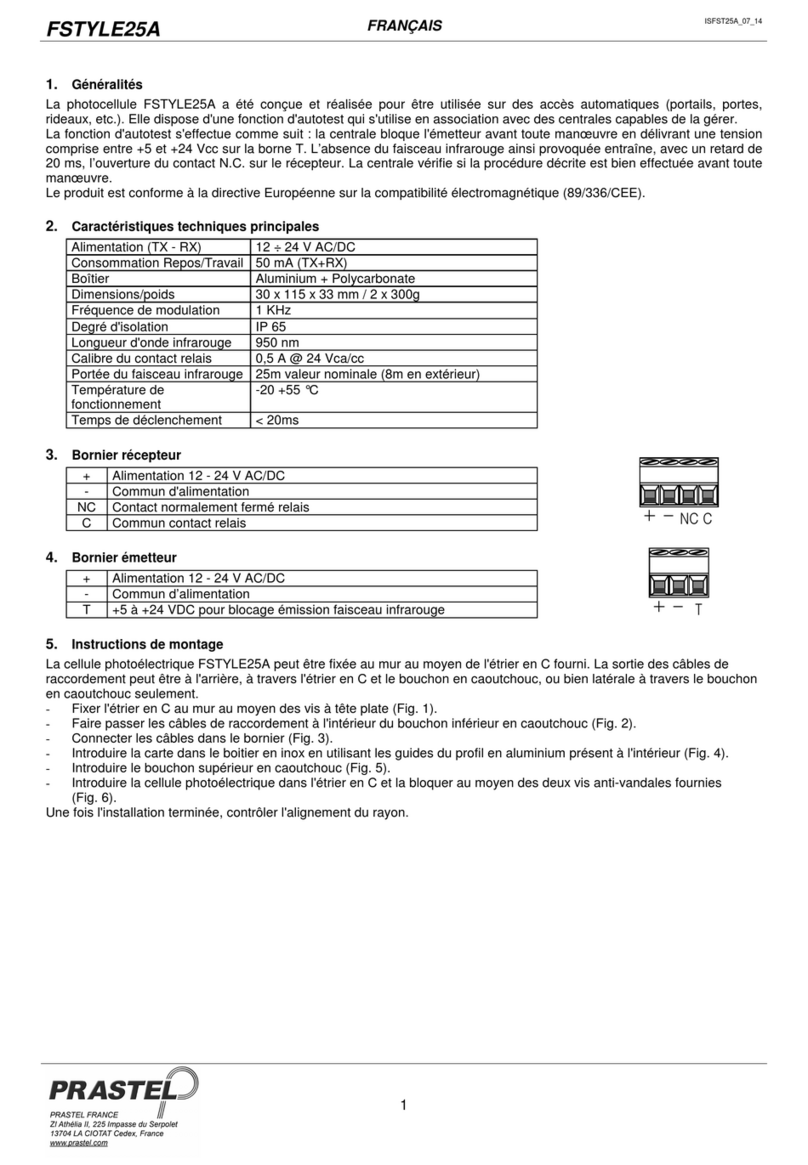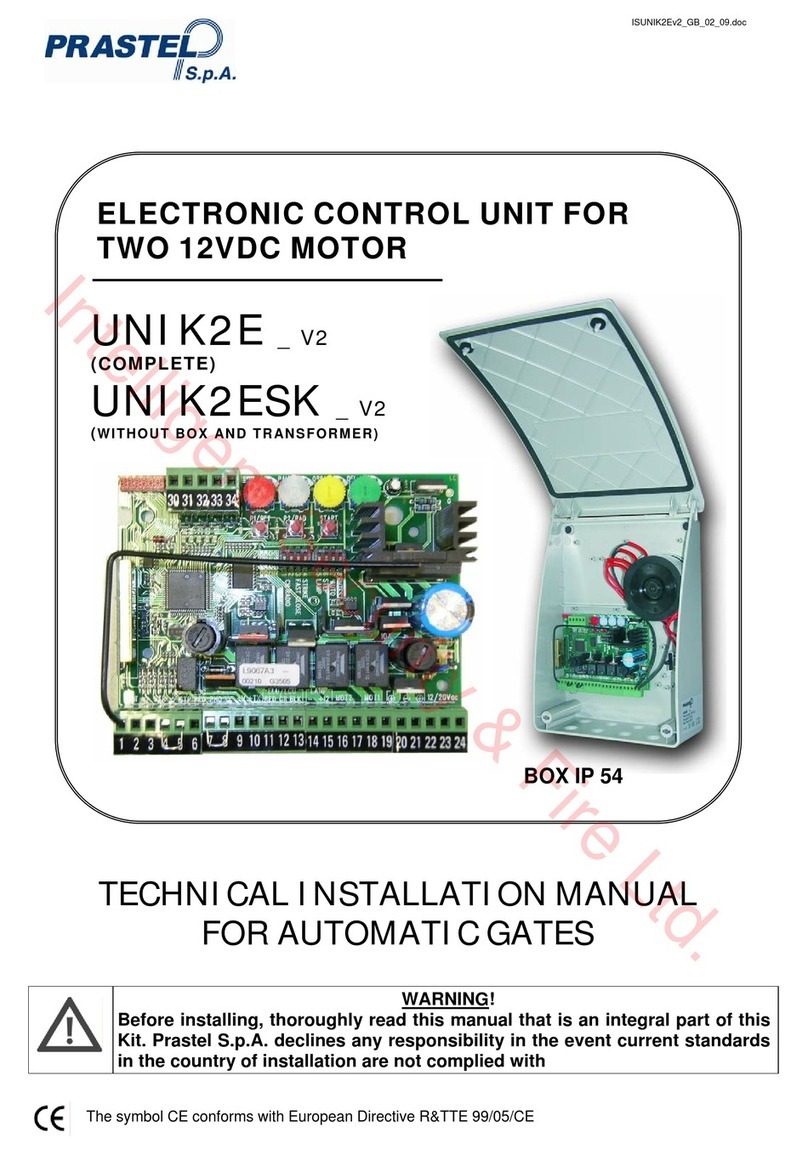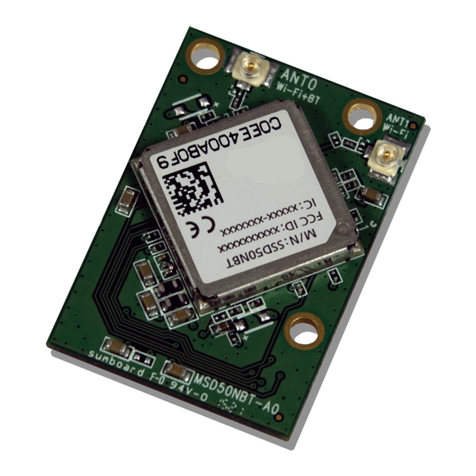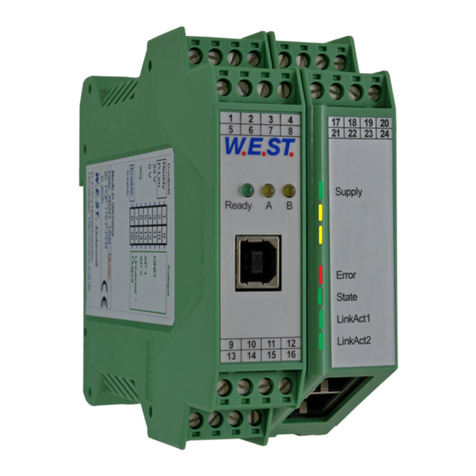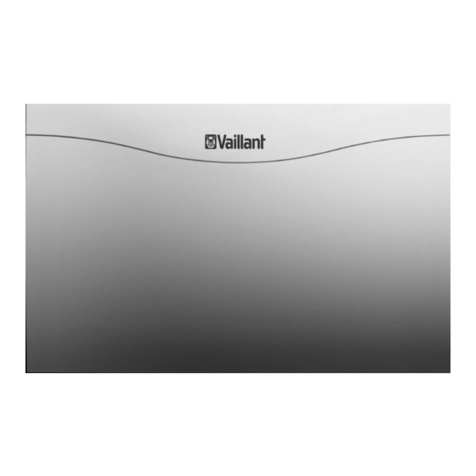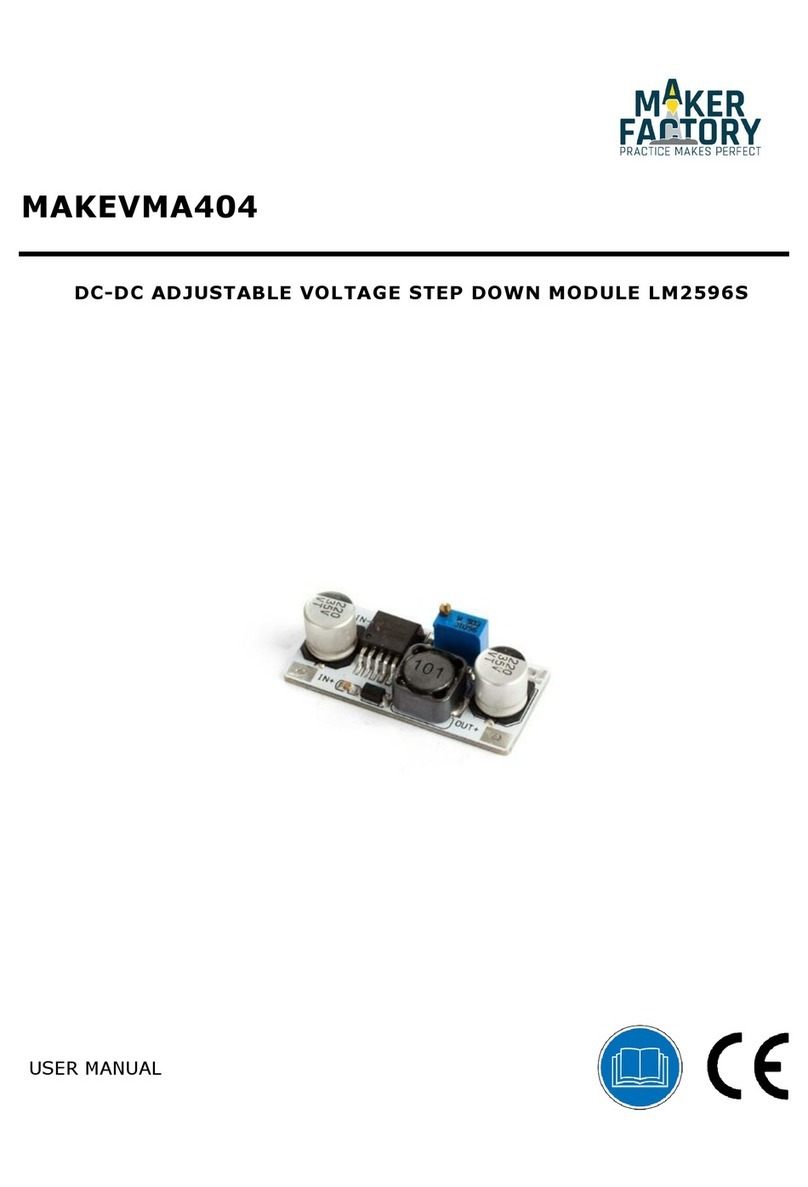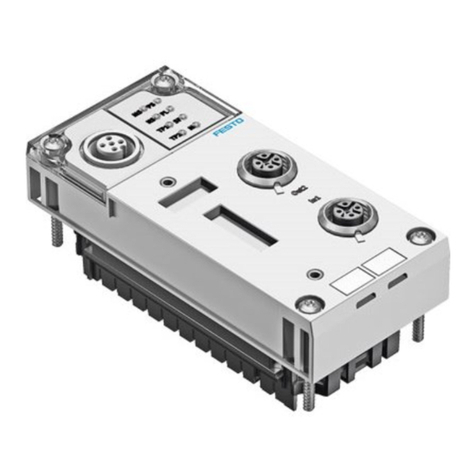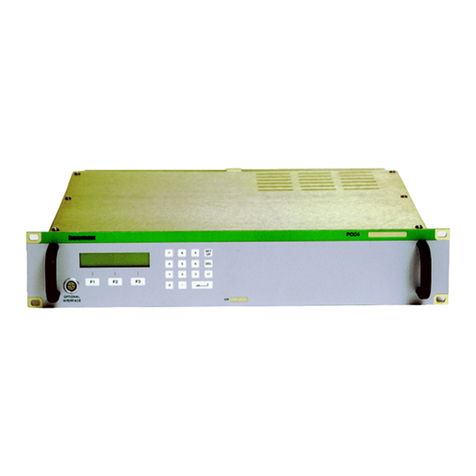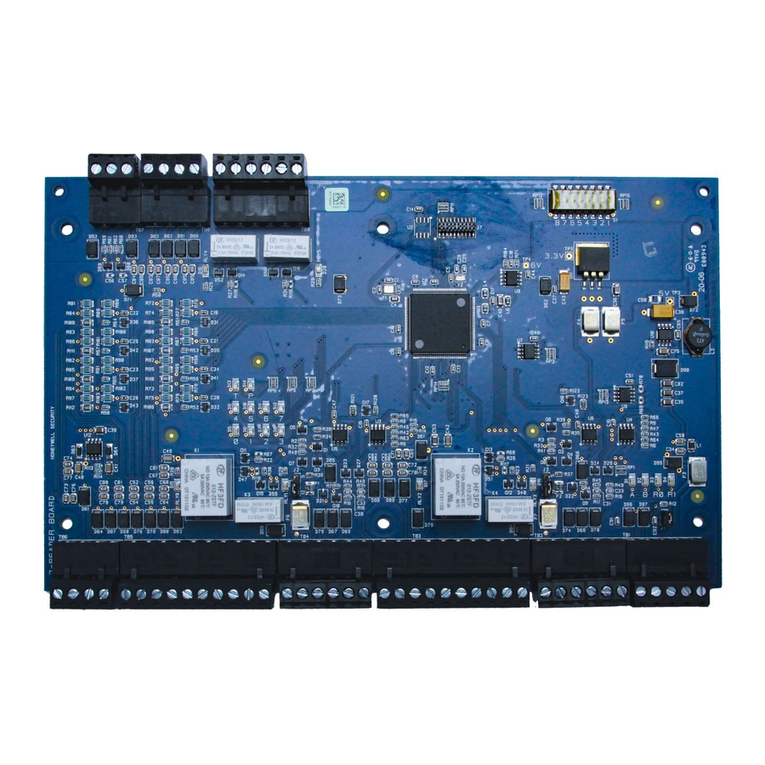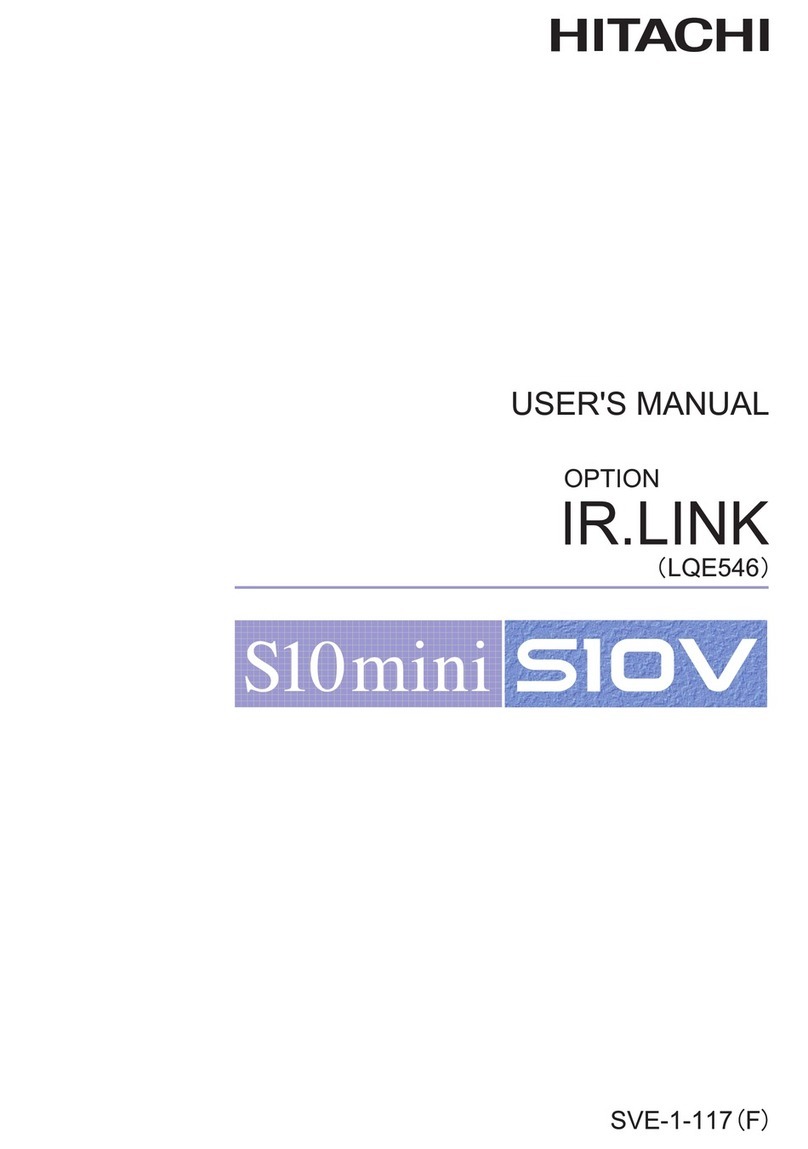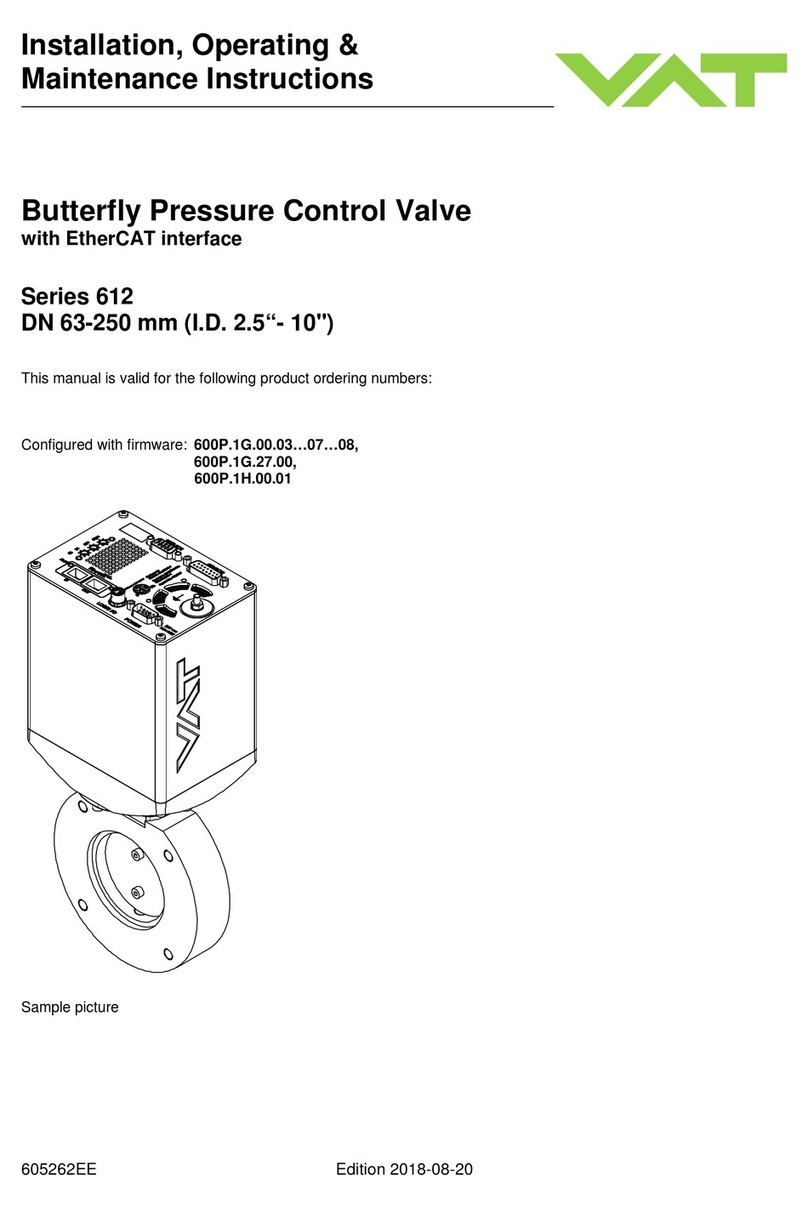
EURO/SER
______________________________________________________________________________________________________________________________________________________________________________________________________________________________________________________________________________________________________________________________________________________________________________________________________________________________________________________________
PRASTEL S.r.l.
Via del Vetraio, 7 40138 Bologna Italy - Tel. +39-051-6023311 Fax +39-051-538460
E-mail: info@prastel.com - Web site: http://www.prastel.com
EURO/SER IT 03_1999 5
MEMBER OF
(*) Il canale 4 è sempre “Attivo”.E’ possibile ad esempio eseguire, con un’unico comando, la chiusura centralizzata e contemporanea ad
esempio di serrande automatiche installate all’interno della portata massima consentita dal trasmettitore.
6.6 Programmazione del funzionamento della centrale tramite il trimmer T1 (Fig. 1)
Impostazione del tempo di lavoro: 3 ÷ 45 sec
7. FUNZIONI FISSE DELLA CENTRALE
Lampeggiatore Frequenza di 2 Hz prefissata via software
Prelampeggio 2 sec in apertura e chiusura
Luce di Cortesia 3 min. rinnovabili ad ogni manovra
Ritardo d’inversione del senso di marcia del motore 1,5 sec
8. DESCRIZIONE DEL FUNZIONAMENTO DELLA CENTRALE
8.1 Generalità
L’apparecchiatura è alimentata dalla tensione di rete (230 Vac evidenziata dall’accensione del LED 1 – fig.1), e fornisce sulla morsettiera di
potenza la tensione per l’alimentazione del motore dell’automazione. Sono disponibili, oltre al comune di alimentazione, due uscite per pilotare
separatamente i due versi di rotazione del motore.
N.B. Quando la centrale viene accesa, non viene eseguita alcuna manovra se non dopo il ricevimento di un comando volontario da parte
dell’utilizzatore
8.2 Comandi contrastanti
In presenza di comandi contrastanti contemporanei, la centrale non ne esegue nessuno.
8.3 Arresto motore
Può avvenire nei seguenti casi:
•Mancanza di alimentazione
•Intervento di una della sicurezza bassa (fotocellula), configurata per lo stop in entrambi i sensi di marcia (dip-switch 4 in
posizione ON)
•Fine del tempo massimo di lavoro impostato con il trimmer T1.
•Arresto prima di ogni manovra d’inversione per protezione motore (pre-impostato a 1.5 sec)
•Attivazione del pulsante di STOP (apertura del contatto N.C. di stop)
In questo caso per ripristinare il movimento, sbloccare il pulsante
di Stop e dare un ulteriore comando via Radio o “APRE” o “CHIUDE” (morsetti 1-4 “CHIUDE” e 1-3 “APRE”).
•Comandi di STOP effettuati via Radio o tramite il comando “APRE” (morsetti 1 e 3) impostati con funzionamento passo-passo
(rispettivamente dip-switch 1 e 2 in posizione ON), o chiusura centralizzata tramite il 4° canale.
8.4 Manovra a uomo presente
•Premere il pulsante di STOP (apertura del contatto N.C. sui morsetti 1 e 9). A questo punto la centrale può eseguire la funzione ad
“Uomo presente” che prevede l’apertura e la chiusura dell’accesso automatizzato tramite due contatti esterni N.O. (morsetti 1-3,1-4 della
morsettiera di comando). Tali comandi (chiusura dei contatti N.O.) devono essere mantenuti volontariamente dall’operatore.
N.B. Durante la manovra a “Uomo presene” resta attiva solo la sicurezza “Bassa” (fotocellula).
N.B. E’ sempre necessario che il contatto di Stop sia chiuso per permettere il funzionamento automatico della centralina.
8.5 Manovra d’apertura
1. Fornire il comando, via radio o tramite comando APRE (morsetti 1 e 3)
2. Si attiva il prelampeggio, del segnalatore luminoso, della durata di 2 sec e l’eventuale luce di cortesia collegata alimentate direttamente
dalla centrale (max. 60 W per ognuna).
3. Se abilitato con il dip-switch 3 in posizione ON, viene effettuato automaticamente il test della sicurezza in apertura (sicurezza“Alta”)
4. Il motore resta in funzione per un tempo pari al tempo di lavoro configurato tramite il trimmer T1, mentre il lampeggiante continua a
lampeggiare alla frequenza di 2 Hz e l’eventuale luce di cortesia rimane accesa per un tempo fisso di 3 min.
8.6 Manovra di chiusura
1. Fornire il comando, via radio solo in modalità passo-passo o tramite comando CHIUDE (morsetti 1 e 4).
2. Si attiva il prelampeggio del segnalatore luminoso, della durata di 2 sec e l’eventuale luce di cortesia collegata alimentate direttamente
dalla centrale (max. 60 W per ognuna).
3. Se abilitato con il dip-switch 3 in posizione ON, viene effettuato automaticamente il test della sicurezza in chiusura (sicurezza”Bassa”)




















